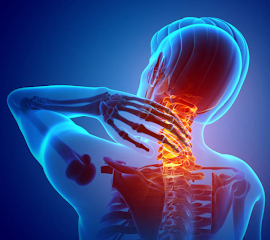As our lifestyles have changed over the last few decades, so has the health of the average American citizen. Nowadays, it’s not uncommon to hear someone say they have diabetes or are pre-diabetic. Luckily, there are lifestyle changes that can help you prevent and even reverse this illness through diet and exercise, rather than medication and doctor visits. This step-by-step guide will teach you how to control your diabetes with diet and exercise so you can take control of your health once again.
The Standard American Diet
There are simple changes one can make to control diabetes: exercise, maintain a healthy weight, take medication if necessary, and eat fewer processed sugars. These methods will help you have more control over the disease.
Think about what you're putting into your body. Remember that exercise is great for diabetics because it regulates blood sugar levels and increases insulin sensitivity-which means it's good for those without diabetes as well! Plus exercise improves cardiovascular health, helps lower blood pressure, and reduces cholesterol levels so there's less chance of heart attack or stroke.
If you're not sure how much exercise is enough, talk to your doctor. They may refer you to an exercise physiologist who can create an individualized program that fits your specific needs.
Take medication when necessary- some patients can manage their diabetes without taking drugs, but if need be they may prescribe medicine such as metformin or insulin. It is important to stay up on your dosage and never let yourself go off treatment altogether;
If too much glucose builds up in the bloodstream it can cause serious health problems such as kidney failure, blindness, coma, amputation of limbs, and even death. No matter what type of treatment works best for you (or which ones work at all!), controlling diabetes through diet and exercise alone can't do all the work!
What Foods Are Safe For Diabetics?
Make healthy food choices by cooking or preparing your food from fresh ingredients. Be aware of what you're eating because many foods are usually high in carbohydrates. Certain vegetables, fish, meat, eggs, dairy products, and beans are okay to eat on a diabetic diet but should be monitored.
Sugary items (cakes) or greasy foods such as doughnuts or fries should be avoided as they can exacerbate diabetes symptoms and blood sugar levels. Fruits that contain large amounts of natural sugars (or added sugars) are best eaten in moderation for those living with diabetes since these can also cause elevated blood sugar levels.
Exercise is another important aspect of controlling diabetes. Being active has been proven to improve health and lower the risk of developing related diseases like heart disease and Type 2 diabetes.
What Foods Should Be Avoided?
A diet rich in whole foods and unprocessed grains, nuts, fruits, and vegetables is recommended. Some types of food to avoid include highly processed foods, refined sugars like glucose or sucrose from cane sugar or beet sugar, saturated fat from red meat, or full-fat milk products such as whole milk.
These foods lead to high blood glucose levels which can increase the risk of heart disease. Health benefits can be obtained by eating plenty of complex carbohydrates, including whole grains and fresh fruit. Diets that reduce the intake of simple sugars help control the onset of diabetes.
How Often Should You Eat?
The frequency of meals is another important factor when it comes to diabetes control. The more often you eat, the better blood sugar control you'll have. For optimal blood sugar control, we recommend eating three smaller meals per day. This will help keep your blood glucose levels as stable as possible during the day, which is good for preventing spikes in blood glucose levels that can happen if you wait too long before eating.
Exercise is also an essential part of a healthy lifestyle, especially for those living with diabetes. There are many forms of exercise including walking, running, biking, swimming, tennis, and yoga. All forms are beneficial as long as they are done regularly.
What Are Some Good Snacks for diabetics?
Diabetics are often encouraged to snack as a way to combat spikes in blood sugar levels. The snacks that are good for diabetics depend on the type of diabetes, but there are some general guidelines. It is important to remember that diet and exercise go hand-in-hand when it comes to controlling diabetes. The following is a list of some good snacks for diabetics:
These healthy snacks will help regulate blood sugar levels so you can avoid dangerous situations such as diabetic ketoacidosis or hypoglycemia.
Getting Active In Your Free Time
Since many people have trouble making time for exercise, try adding it to your daily routine in the form of physical tasks. Examples include: taking stairs instead of elevators or escalators, parking at a further distance from the store so you have to walk a bit more, and walking around the office instead of sitting at a desk all day. This will not only help you stay active, but it will also promote better health! And make sure you always eat healthy snacks like fruits and veggies to maintain an optimal diet.
When you need it, ask for help from others.
We understand that this is not easy, and we’ve been there ourselves. But being proactive, and being aware of what you put into your body is the first step in controlling diabetes. You have a lot to gain when you invest in yourself. Knowledge is power, so do some research on what foods are good for diabetes health – both in terms of blood sugar control but also how they affect other things like cholesterol and weight gain. And don’t forget to exercise!
.jpg)
.jpg)
.jpg)
.jpg)



.jpg)
.jpg)
.jpg)
.jpg)
.jpg)
.jpg)
.jpg)

.jpg)
.jpg)






.jpg)
.jpg)
.jpg)
.jpg)










.jpg)
.jpg)





.jpg)
Comments